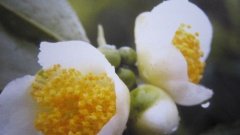
They think that around the 2nd or 3rd Century AD, the Mongolians and Tibetans learned to drink tea from the Chinese.
Compressed cakes of dried tea from China were transported by camel and the drink became the national drink of both races.
Some Turkish traders bartered for tea on the Mongolian borders in the late 6th Century.
Trade with the Arab world started in the 5th Century and 6th Century AD but there is no proof that tea was amongst the goods sold until the reign of Kablai Khan in the 13th Century.
During the 6th and 7th Century, the Arabs had a monopoly over trade between China and the West, but there is still no record of tea having changed hands. Marco Polo arrived in China in 1271 but still no tea was mentioned.
Then, in 1559, ‘Giambattista Ramusio, an Italian Civil Servant, wrote that a Persian traveller by the name of Hajji Mohammed had told him of ‘Chai Catai’, a herb used by the people of the Szechwan Province in China to make a medicine for stomach ache and gout.
From that point on, there were several references that indicated a growing awareness of tea, though still no record that it had arrived in a European Port.
The Portuguese were the first to set up a trading base on the Canton river in 1557 but shipped no tea.
The Dutch with a trading base in Bantam on the Isle of Java, sent their first carton of China Tea to Amsterdam in 1606.
In Holland the tea was sold in apothecaries shops and later in grocery shops which were called ‘colonial warehouses’.
By the mid 1600’s interest among the wealthy and upper classes in Europe for tea was a costly indulgence, and was beginning to grow and so the Dutch decided to re-export the tea they had shipped from China into Portugal, Germany and France.



No Comments
Interesting Info B! Worth being reminded of this history…from time to time…;)xx
There is so much History on tea its quite amazing 🙂
I wonder when it became “tea” as such?
Gosh, there will be a time without a doubt, I will try and find out for you 🙂